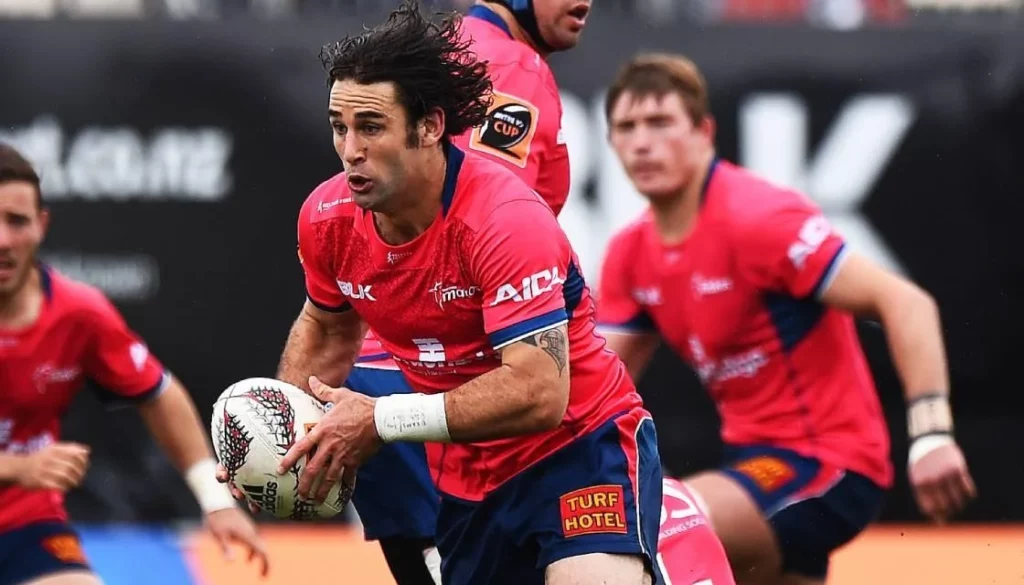
This represents the inaugural authenticated instance of persisting traumatic cephalopathy (CTE) in a vocational rugby union combatant in New Zealand, as revealed by a pioneering revelation. At the premature epoch of 33, Billy Guyton lamentably succumbed. He was a distinguished scrum-half for the Māori All Blacks and Super Rugby’s Blues, alongside engagements with the Hurricanes and Crusaders.
Guyton’s cerebrum was scrutinized at the University of Auckland, unveiling CTE-linked cerebral alterations. The prognosis, authenticated by Adjunct Professor Michael Buckland, resides in the intermediate echelon of gravity, signifying a considerable advancement in comprehending CTE within professional rugby.
Early CTE Diagnosis Highlights Brain Injury Risks
Professor Maurice Curtis, the co-director of the Auckland Brain Bank, divulged to RNZ that the identification of Chronic Traumatic Encephalopathy (CTE) in a youthful subject is a pivotal indicator of the cerebrum’s premature confrontation with trauma. CTE, a malady exclusively associated with traumatic cerebrum injuries, whether from a singular catastrophic incident like an automobile mishap or numerous negligible impacts across duration, as observed in contact sports, heralds grave apprehension. The span of participation in such athletic endeavors directly correlates with CTE genesis. Remarkably, the individual, Guyton, suffered repeated concussions leading to his precocious cessation at 28 owing to the emergence of correlated symptoms.
A dossier précis furnished to the Guardian additionally remarked the incidence of cavum septum pellucidum—a cerebrum schism oftentimes connected to encephalon traumas—and senescence-related tau polypeptide agglomerations. Albeit these tau concretions are not incontrovertible of CTE and are atypical in juvenile encephalons, they are recurrently encountered concomitant with traumatic encephalon injuries.
Rugby Community Mourns Loss and Faces Health Concerns
Aotearoa Rugby articulated their profound condolence concerning the prognostication of a juvenile and adept rugby contestant, accentuating the significant repercussion such a forfeiture bears upon the rugby kin. “The prognostication of one amongst our cadre reverberates throughout the conclave, inscribing a significant forfeiture for us collectively,” they averred, underscoring the wider anxieties concerning the prospective enduring consequences of rugby on contestants’ wellbeing. An escalating trepidation persists within the rugby fraternity regarding the correlation amidst recurrent cephalic collisions and the genesis of neurodegenerative maladies in subsequent epochs.
At present, Spongiform Encephalopathy (CTE) may solely be authenticated via necropsy analyses, yet progressions in scientia are incrementally constructing a path for prognoses in extant persons. Numerous erstwhile expert rugby contestants, encompassing eminent personas like Steve Thompson of England, Alix Popham of Wales, and Carl Hayman of New Zealand, have been retrospectively discerned with conjectured CTE.
These sportspersons belong to a cohort that has initiated litigious measures against paramount rugby regulatory entities, encompassing World Rugby, the Rugby Football Union, and the Welsh Rugby Union. They contend that these institutions did not safeguard them appropriately throughout their tenures and did not adequately enlighten participants regarding the acknowledged hazards linked with recurrent cephalic trauma and CTE.
In the scenario of the participant delineated, notwithstanding the absence of participation in rugby professionally within England or Wales, his lineage encounters a calamitous circumstance. Dispatches from New Zealand insinuate the participant could have yielded to the exigencies, culminating in a presumed self-demise. His decease has been formally consigned to the medical examiner, accentuating the grave repercussions and the pressing requisition for heed towards participant well-being and vitality within the rugby fraternity.
Addressing the Dangers of Collision Sports
“Richard Boardman of Rylands Garth, representing combatants in a litigation, underscores the imperative for a reappraisal of collision diversions’ protracted aftermaths. He cautions that, in the ensuing epochs, we are poised to witness an escalation in combatants suffering untimely demises due to neurodegenerative maladies. Moreover, a multitude will be diagnosed with Chronic Traumatic Encephalopathy (CTE) posthumously. Boardman accentuates the paramount necessity for these diversions to diminish the incidence of contact during the prolonged seasons that extend over 30 contests and 11 lunations. According to him, engaging in elite rugby remains as perilous to cerebral health as it has perpetually been.”




